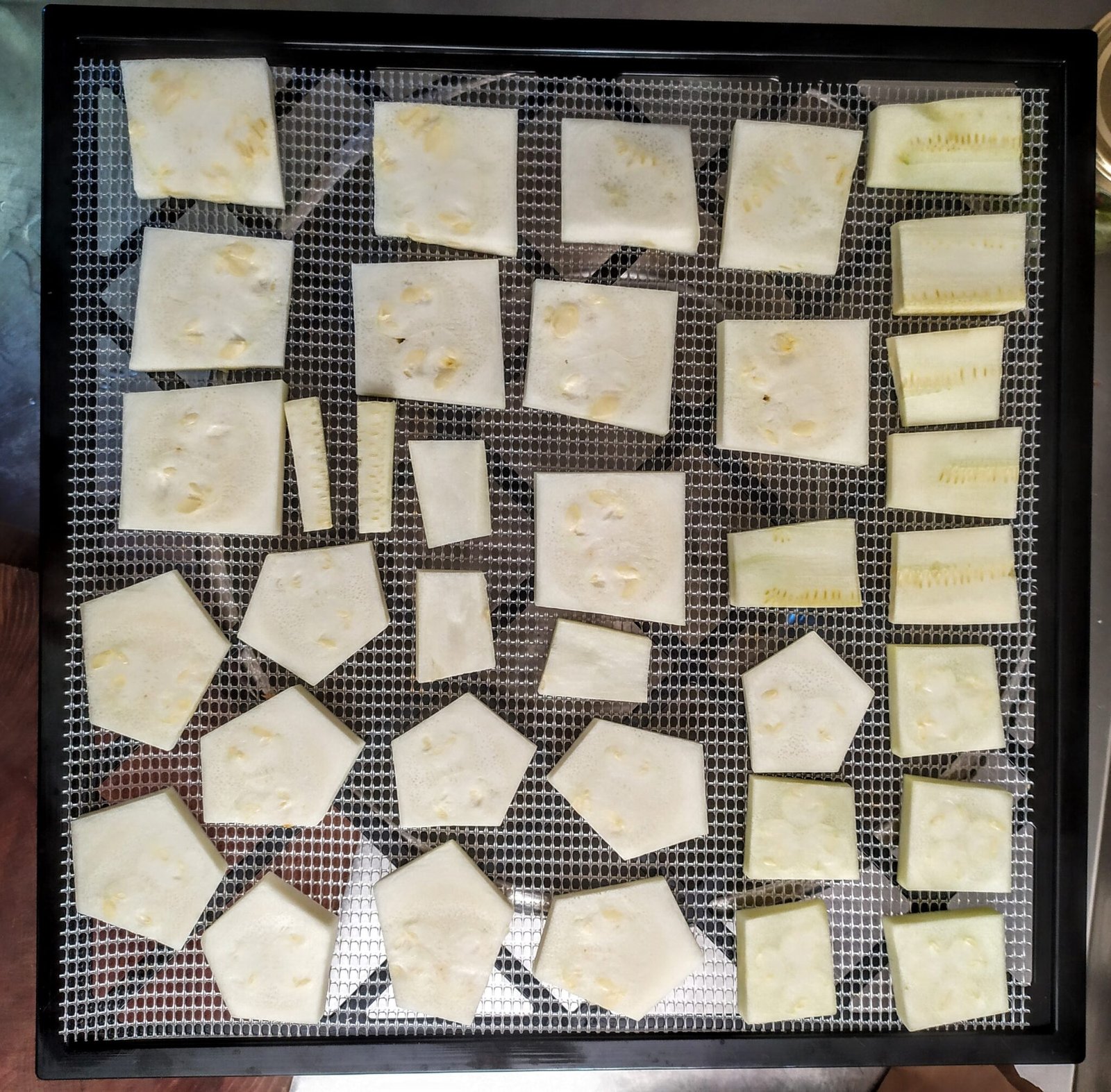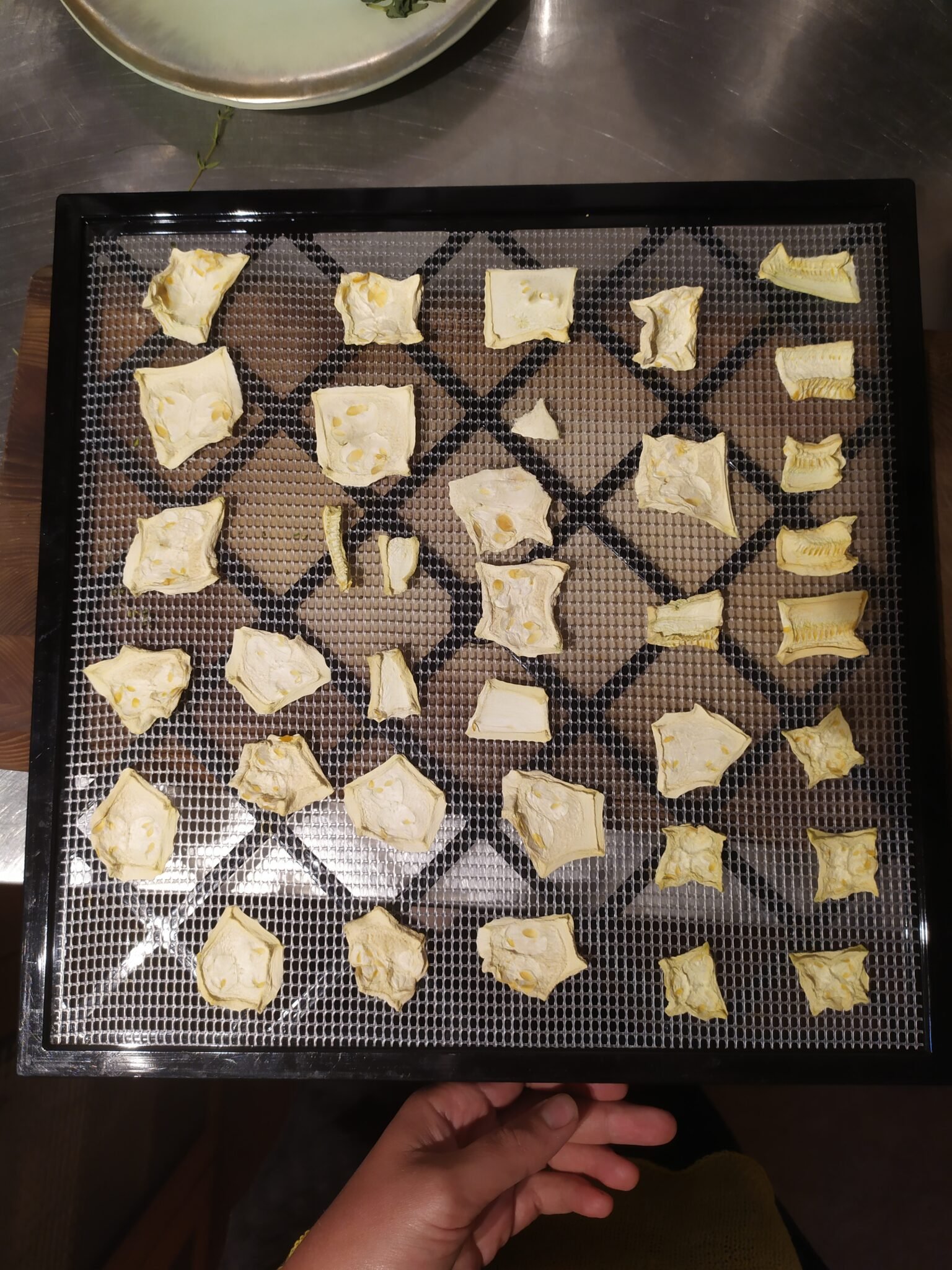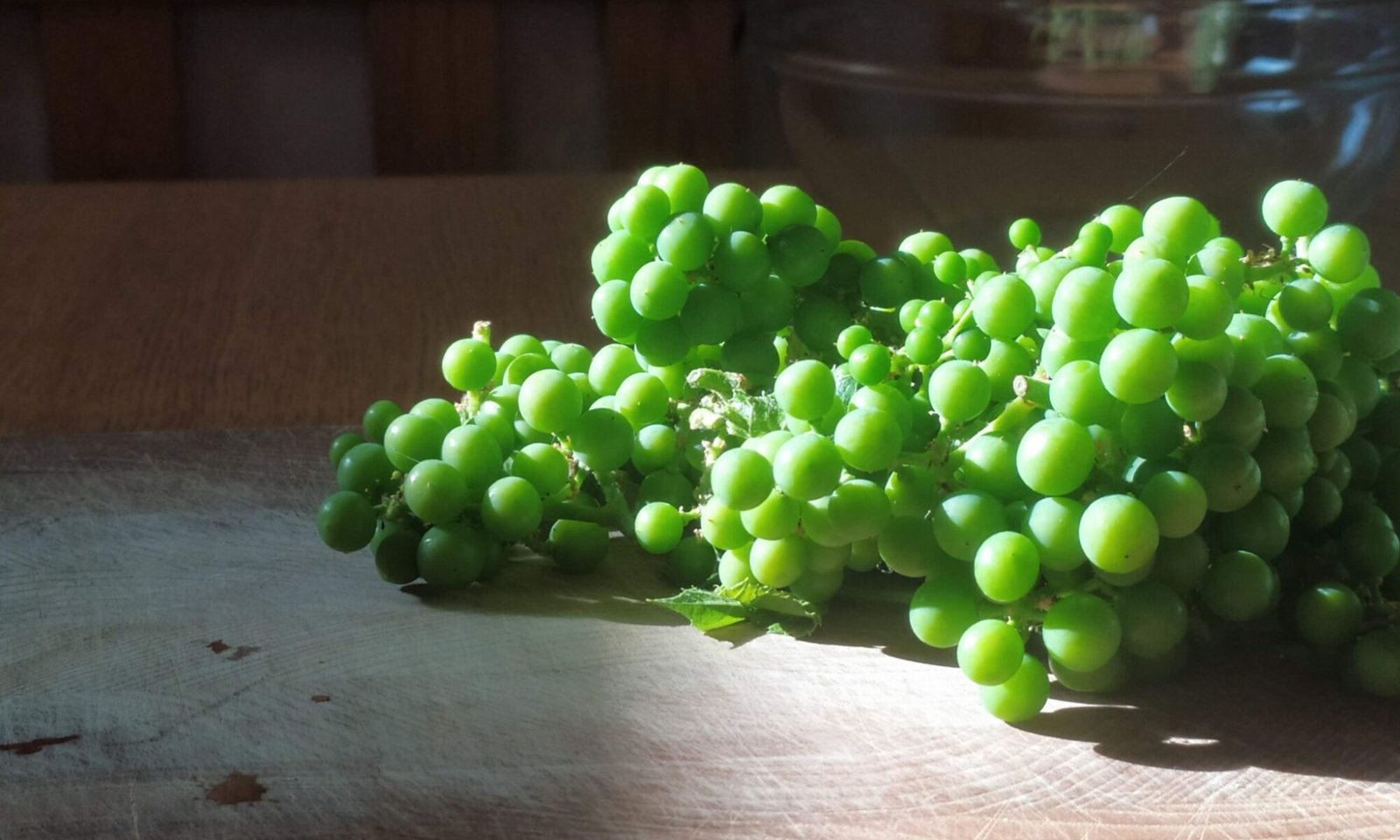Although most cucumbers can be delicious lacto-fermented it’s best to use cucumbers with thin skins, otherwise, peeling them may be necessary. Overripe cucumbers should also be emptied of their seeds. Cut off the part where the flower was attached, as enzymes from that area can cause it to become soft. In these recipes, I’ve used different brine concentrations, but generally, with cucumbers, it’s fine to use a brine that is between 3.5% – 6% salt, resulting in approximately 1.5% – 3% salt in the final product after the cucumbers have absorbed salt through osmosis. Using less salt than that increases the chance of the cucumbers becoming soft. More salt results in a sour and crispy pickle, while less salt yields a milder and softer pickle.
Continue reading “Cucumber, gherkin, gherkin”Dilly beans
Dilly beans are one of the most popular fermentations among our CSA members and enjoyed by both young and old. It’s one of the easiest fermentations to make but takes time in other ways like the harvest and maturing time – I usually let this fermentation sit in the root cellar for at least three months before jarring – and then there’s the jarring process itself. Fitting long beans into short jars is a time-consuming task. This means that the majority of the work is done in winter when growers typically have more time.
Continue reading “Dilly beans”Dried zucchini heart
The zucchini/courgette harvest can be overwhelming, but if you have a vegetable dehydrator, there’s a solution! Trim off the firm outer part of the courgette and ferment it – here are two methods for lacto-fermenting courgettes. Slice the hearts into 1 cm thick slices (they become very thin when dried) and place them on the dehydrator. Pat them dry with a paper towel or a clean kitchen cloth to speed up the process and prevent sticking. Dehydrate them thoroughly. Enjoy them as chips or grind them into a flour using a food processor. Use this powder in kimchi paste and in cooking – it’s particularly delicious in falafel or bean burgers.




Verjus
Verjus is a refreshing sour flavour enhancer that falls between lemon and vinegar in taste. It can be stored in the refrigerator for a few weeks (if you use citric acid, it can last for several months, I have read but not tried). Verjus is the juice extracted from unripe grapes, which are typically thinned out during the summer. According to Wikipedia, it was most popular during the Middle Ages when it was mixed with herbs like meadowsweet for a unique flavour. Nowadays, it is primarily used in salad dressings, but in the past, it was used in cooking as a substitute for wine and vinegar.
Continue reading “Verjus”Fermented raspberry leaf tea
Raspberry leaves can be gathered throughout the season, but I find they are best and most fragrant in early summer. It’s fine to dry these leaves as they are, but the flavour becomes much deeper and more complex after fermentation. It’s worth the effort! It’s also likely that more nutrients become available through fermentation and that polyphenols and antioxidant concentrations increase.
Continue reading “Fermented raspberry leaf tea”Fermented sorrel
One of the most delicate and unique ferments I’ve made, as close to a divine taste as I’ve come in the world of fermentation. Not to exaggerate… but seriously, this is something special.
Continue reading “Fermented sorrel”The first harvest – the garden’s unintended biodiversity and other plants
The sun is shining, the birds are singing, and in the garden, the first nutrient-rich green leaves are popping up – no sowing or planting required: nettles and ground elder! Even in greenhouses, you may find some leafy greens.
Nettles
April and May are the best seasons for using nettles as a vegetable. With gloves on, pick the tender tops or 4-6 of the top leaves from larger plants. Later in the year, you can also harvest the immature and mature seeds and sprinkle them over muesli or use them in bread.
Continue reading “The first harvest – the garden’s unintended biodiversity and other plants”Fermented rhubarb
Here’s how to do it: Cut the rhubarb stalks into 1 cm pieces, press them into a glass jar, and cover with a brine of 2-3% salt concentration (20-30g of salt per liter of water). Put on the lid and leave at room temperature for 4 days, burping if necessary, and then refrigerate. Place a small plate or a few Sweet cicely leaves on top to keep everything submerged under the liquid surface. I have added rosé pepper and Mexican tarragon/sweet mace with good results. Use it as a starter in pesto or in any recipe where you would normally use lemon juice, such as in hummus. If you find other recipes where rhubarb fits, please let me know and I’ll share them here!
Continue reading “Fermented rhubarb”Salt and water
Brine is used in lacto-fermentation when you don’t want to grate or press the vegetables. Think cucumbers and green beans, mixed vegetables in large pieces (such as carrots, cauliflower, onions, and sugar snap peas), and even leaves and berries can be lacto-fermented this way. The brine should be quite salty because a lot of it will be absorbed by the vegetables, and you want to achieve a final salt concentration of 1-2% overall. I use a brine with 4% salt for most fermentations. Think of the sea – but the Atlantic rather than the Baltic. Unrefined fine sea salt from Denival (which can be purchased in a 20kg bag) works excellently. I choose this salt because it is not highly refined, has not gone through a lot of chemical processing and doesn’t contain anti-caking agents (I am not anti cake!). However, lacto-fermentation bacteria can handle most types of salt, so start with what you have at home.
Continue reading “Salt and water”From seed to jar
It’s possible to lacto-ferment almost anything from your garden, but with a little planning, you can ensure good results by choosing varieties that are particularly well-suited for fermentation. Here are my best seed tips!
Continue reading “From seed to jar”









